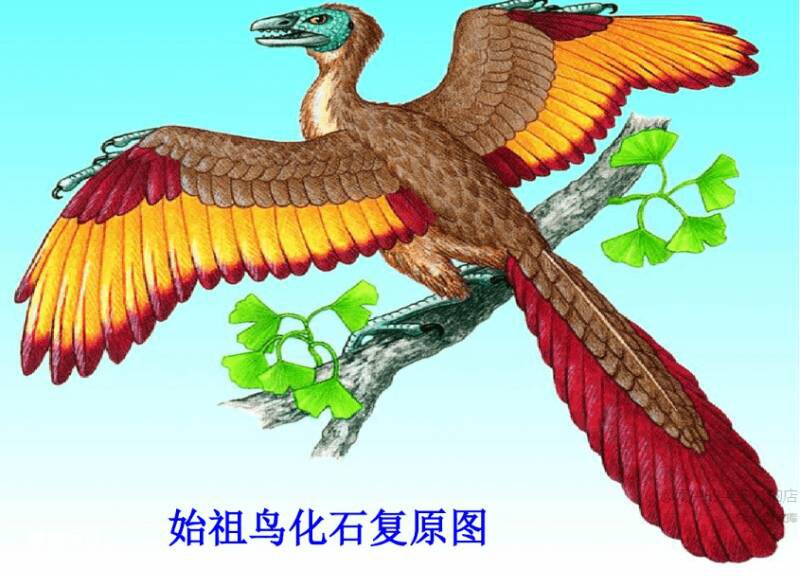Chinese name: Archeopteryx
Latin name: Protarchaeopteryx
Age of survival: Early Cretaceous
Fossil origin: Liaoning, China
Physical characteristics: 70~90 cm long
Diet: carnivore
Type: Theropod
Definition: primitive Archaeopteryx

In the March 1997 issue of "China Geology", a paper by Ji Qiang and Ji Shuan titled "China's Archeopterygian Fossils" was published. For anyone concerned with the study of the origins of birds, the subject alone holds great allure.
We all know that Archaeopteryx is the world-recognized ancestor of birds. From the moment it was first sighted, it became the darling of paleontologists and has always been unrivaled. For more than a hundred years, except for 10 specimens found in Solnhofen, Germany, no fossil comparable to it has been found anywhere else in the world.
Chinese paleontologists have discovered similar fossils outside Germany for the first time, and its significance is self-evident. Dr. Ji Qiang and Ji Shuan commented on the primitive archeopteryx they named this time in the article: primitive archeopteryx is similar to the German Archaeopteryx, but has stronger bones and a more primitive shape; its body has developed real feathers.
What kind of animal is Archeopteryx? The original specimen of Archeopteryx was found in a ravine near a village called Hengdaozi, a small village very close to Sihetun. Archeopteryx was about the size of an eagle, with teeth in its mouth and long forelimbs and hindlimbs. You may still remember the group of small but ferocious Velociraptors in the movie "Jurassic Park". The body shape of the primitive Archeopteryx is very similar to that of Velociraptors.
If defined from the perspective of morphological research, Archeopteryx cannot be counted as a bird. As we all know, birds are a type of vertebrates with feathers that can fly in the sky. All birds, including Archaeopteryx, fit this definition. Although some birds, such as ostriches, cannot fly, biologists also have enough evidence to show that the ancestors of ostriches are flying animals. They are birds that lost the ability to fly after their birth.
The morphological structure of the primitive Archeopteryx shows that it cannot fly, and judging from its systematic position, its ancestors cannot fly. Therefore, it is inappropriate to classify the primitive Archeopteryx as a bird. Of course, if we follow the traditional simple definition: feathered vertebrates are birds, the primitive Archeopteryx can be classified as a bird, because the primitive Archeopteryx does have bird tail feathers that are very similar to those of modern birds.
However, the most important scientific significance of Archeopteryx is precisely that it is not a bird, but it has feathers. Perhaps not only ordinary people, but even some world-renowned paleontologists cannot accept the fact that a dinosaur has real feathers. This is really a ridiculous thing.
In 1998, Ji Qiang and others collaborated with North American paleontologists to report the discovery of Archeopteryx internationally. His collaborators include Curie, the world's top expert on theropod dinosaurs, and Norrell of the Museum of Natural History in New York. In an article published in the journal "Nature" on June 25, 1998, they revised the errors in Ji Qiang's domestic article and repositioned Archeopteryx stout. This time, they classified Archeopteryx robustus into the theropod dinosaurs, believing that it represented a type of maniraptorosaur that was very closely related to birds, rather than belonging to birds as originally identified. However, its teeth were not as sharp as those of typical carnivorous dinosaurs, and it did not have the unique tail of Velociraptor.
animal tags: Protarchaeopteryx
We created this article in conjunction with AI technology, then made sure it was fact-checked and edited by a Animals Top editor.